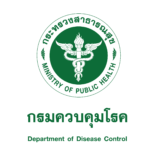Louis Pasteur and Rabies Vaccine
28 September is World Rabies Day and also memorializes the anniversary of Louis Pasteur’s death.
Before he developed the first rabies vaccine, he discovered the food safety pasteurization process and prevented new silkworm eggs process in silk industry. His discovery of the germ theory of disease leaded him to discover the anthrax vaccine and other vaccines. His biology is similar to others geniuses that be pioneer and bring other innovations to the world.
Louis Pasteur was born on December 27, 1822, in Dole (Jura, France), Pasteur was not a bright student during his elementary years. He was more interested in fishing and drawing.
Photo credit: Cjulien21 (2012). Notre-Dame de Dole. Retrieved September 24, 2019. From https://en.wikipedia.org/wiki/Dole,_Jura#/media/File:Dole_quartier_des_tanneurs.jpg
Fortunately, he completed the basic knowledge in Letters and Mathematical Sciences, Pasteur joined the most esteemed French university Ecole Normale Superieure in Paris for graduation. In 1847, he completed his Doctorate of Science. He was appointed as physics professor at the Dijon high school in 1848 and later moved to University of Strasbourg as professor of chemistry.
Photo credit: Encolpe. (14 September 2008). École normale supérieure’s entrance. Retrieved September 24, 2019. From https://commons.wikimedia.org/wiki/File:Fa%C3%A7ade_de_l%27%C3%89cole_normale_sup%C3%A9rieure.JPG
Periodically, the works and discoveries of Louis Pasteur can be described into three phases.
25 to 40 years of age (as a physicist and a chemist)
Crystallography: Louis Pasteur started his scientific career as a chemist studying organic crystals. His comprehensive research on crystallography, chemistry and optics, stereochemistry (or spatial chemistry) which initiated the development of chemical synthesis was originated after Pasteur described this fundamental rule:
“Only products originating under the influence of life are asymmetrical, because the cosmic forces that preside over their formation are themselves asymmetrical”.
Alcoholic Fermentation: Pasteur’s discovery of molecular asymmetry occurred during experimentation on paratartrate crystals. He discovered that under polarized light, inactive substance became active due to fermentation. Based on his experiments, he associated fermentation with life which led him from studying molecular asymmetry to contagious diseases through fermentation.
Pasteur laid foundation for all microbiological techniques through his research on lactic and alcoholic fermentation and defined these principles:
- All fermentation is caused by a microorganism
- There’s a particular ferment for every given fermentation
- A sterile culture medium is required for ferment growth
- Medium has to be seeded with absolute ferment particles
40 to 55 years of age (as a biologist)
Spontaneous Generation: Pasteur with his research and ingenious experiments on fermentation rejected the long prevailing spontaneous generation theory. In his paper in 1862, he explained that airborne dust carried the germs of yeasts and microorganisms present during the fermentation process, and even the most perishable liquids could be preserved if they were kept away from these germs. Through different innovative yet simple experiments involving grapes, fermentable solutions and swan-neck flask he clinched the spontaneous generation argument.
Pasteurization: (Wine & Beer Diseases): Pasteur continued his research and applied his microbiological techniques to agricultural and industrial sectors successfully. His pasteurization process concluded that all fermentable liquid could be prevented from a spoiling with a special heating treatment. This method was particularly implemented to save wines and beers from diseases by heating at 55ºC.
Silkworm Diseases: The silkworm disease destroyed the silk industry all over the world in 1865. Although, Pasteur had no idea about silkworms but he was asked by the Department of Agriculture to investigate this disease. His microscopic study of the worms revealed that the disease was caused by shiny corpuscles. He further established that two types of the diseases, Pabrine and Flacherie were hereditary and contagious as well. He invented cellular egg production to terminate the disease. His study of silkworm diseases laid foundation for prophylaxis rules and provided solution for hereditary and contagious problems, and also inspired him to discover germs theory.
55 to 65 years of age (as a microbiologist)
Germ Theory of Disease: The discovery of the germ theory of disease remains the pinnacle of Louis Pasteur’s scientific career. With his use of microbiology for medicine and surgery he proved that many diseases were caused by the presence of foreign microorganisms. In that connection, he carefully studied and discovered various infectious diseases such as staphylococcus, streptococcus and pneumococcus. He prescribed methods of attenuating microbe virulence (chicken cholera and sheep anthrax). He followed his discovery of germ theory with the utilization of vaccines to prevent diseased like cholera, anthrax and swine erysipelas.
With his analysis and treatment methods for infectious diseases, Pasteur established the immunology branch of science.
Rabies: Development of vaccine against rabies or hydrophobia was the last and the most famous success in the long career of Pasteur’s research. Rabies attacked the nervous system and it was considered a dreadful disease for its symptoms and treatment. At first, Even Pasteur failed to find and isolate the germ, but with his excellent experimental method he built an invisible micro-organism to attenuate the virulence. He used the micro-organism to rabbit marrow successfully. Then, for the first time on July 6th, 1885 he treated 9 years old Joseph Meister with his anti-rabies vaccine and the kid recovered perfectly. This milestone transformed Pasteur into a legend.
Photo credit: F. Pirodon (1985). Louis Pasteur with Joseph Meister. Retrieved September 24, 2019. From https://www.awesomestories.com
In 1888, Pasteur Institute was inaugurated in Paris for treatment of rabies and other diseases. Louis Pasteur – the French National Hero, died in 1895 at Marnes la Coquette.
Reference:
- com (Feb 3, 2010). Discovery of Pasteurization. Retrieved September 24, 2019. from https://explorable.com/discovery-of-pasteurization
- The World Health Organization. (2019). World Rabies Day. Retrieved September 24, 2019. from https://www.who.int/rabies/WRD_landing_page/en/
- F. Pirodon (1985). Louis Pasteur with Joseph Meister. Retrieved September 24, 2019. From https://www.awesomestories.com/images/user/5518245d1c97ef578b5b9497dc270004.jpg
- THE INSTITUT PASTEUR. (2019). OUR HISTORY. Retrieved September 24, 2019. From https://www.pasteur.fr/en/institut-pasteur/history










